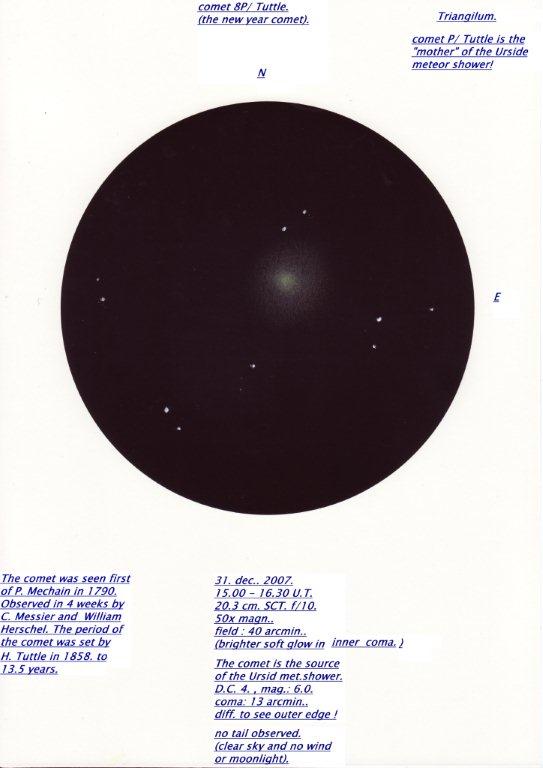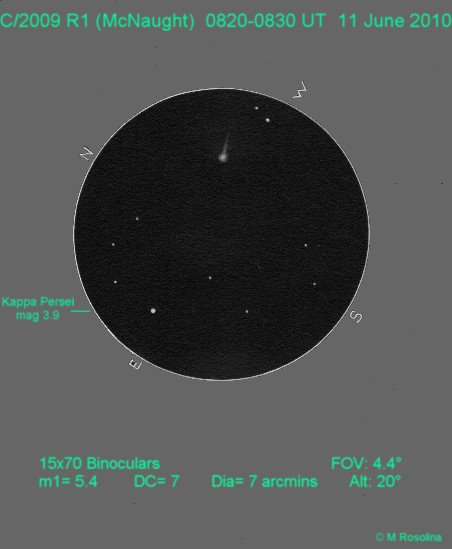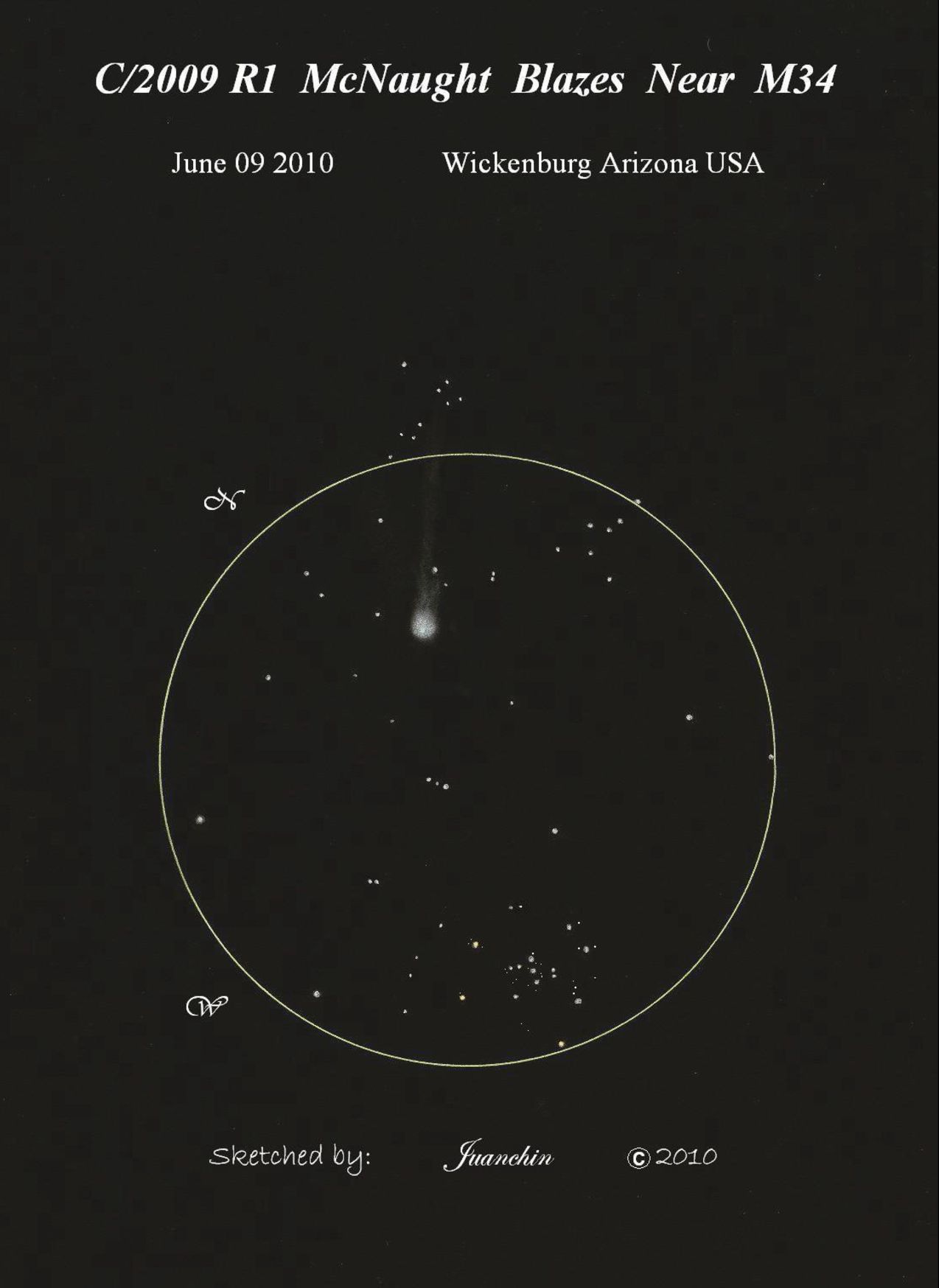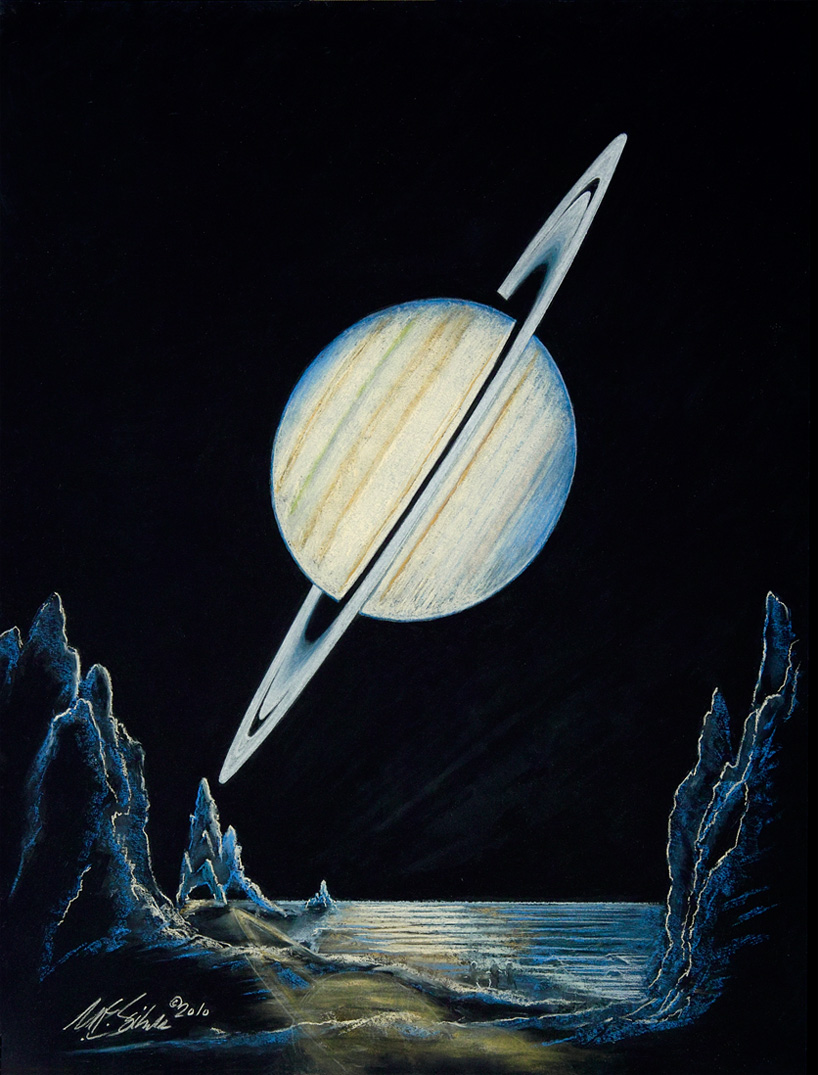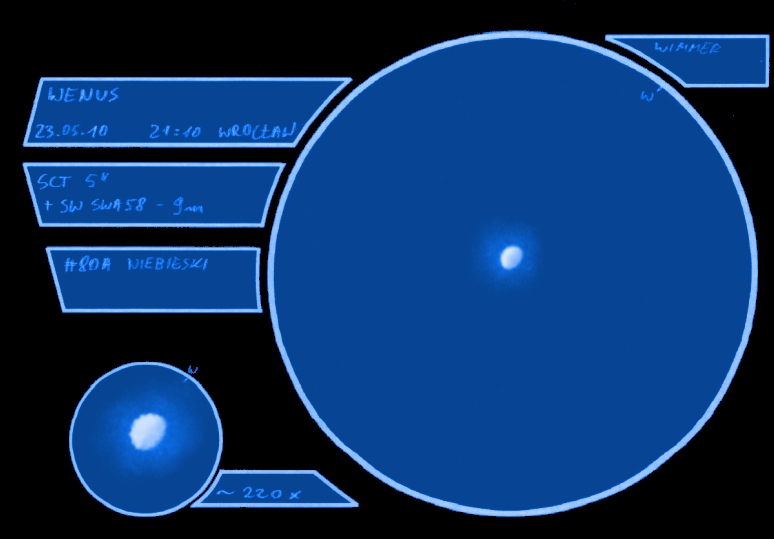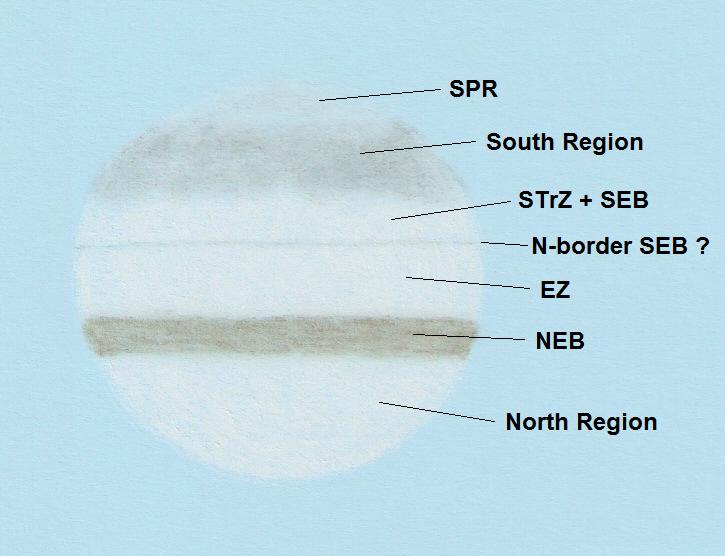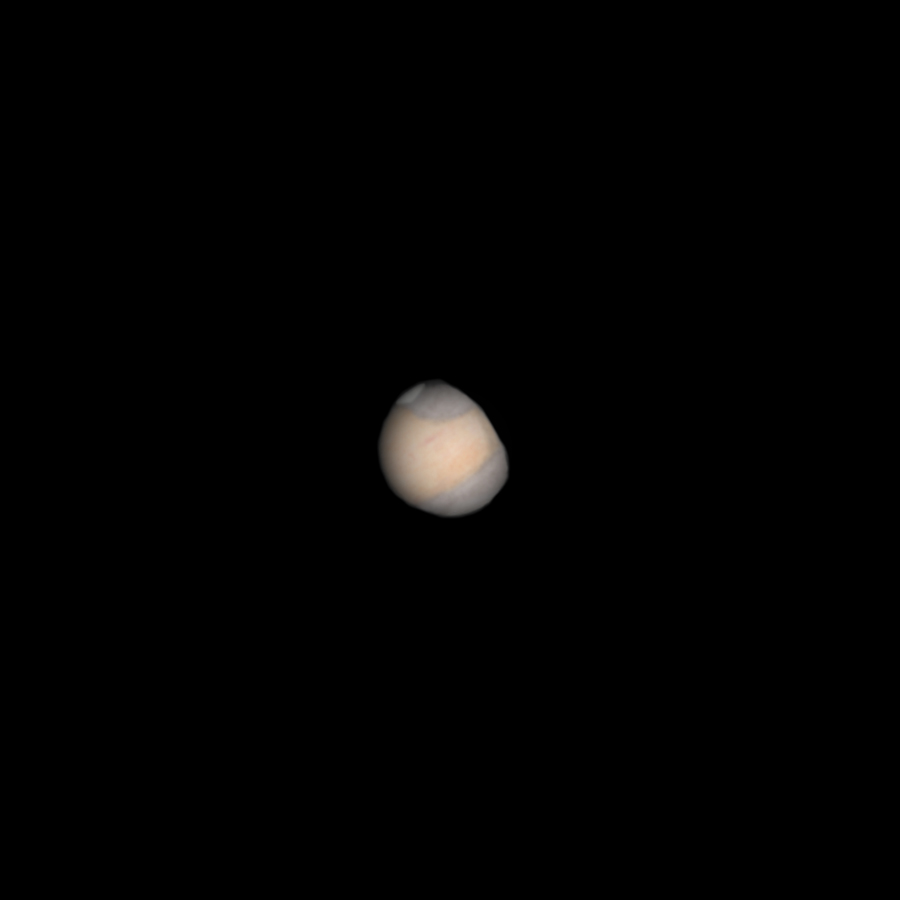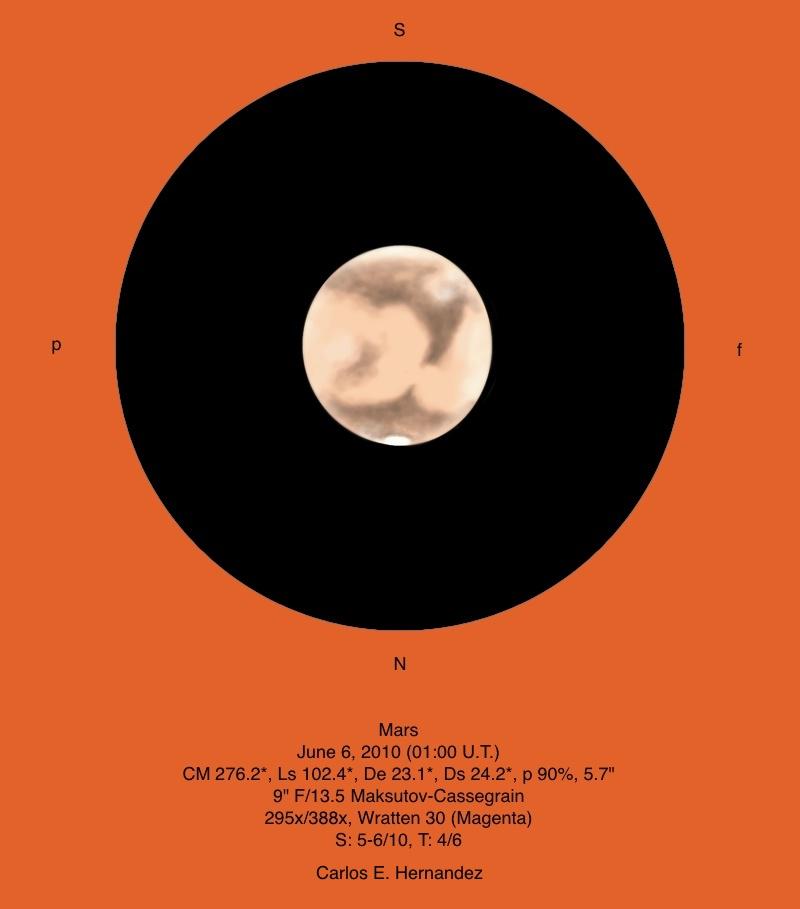
Mars – June 10, 2010
By Carlos E. Hernandez
I made an observation of Mars on June 10, 2010. Although the angular diameter was less than six arc-seconds (5.7” to be exact) I was able to detect albedo features when the seeing steadied for moments at a time.
Date (U.T.): June 10, 2010
Time (U.T.): 01:00-01:15
CM: 276.2*W-279.9*W
Ls 102.4*, De 23.1*, Ds 24.2*
p 90%, 5.7” (Diameter)
Instrument: 9-inch (23-cm) F/13.5 Maksutov-Cassegrain
Magnification: 295x and 388x
Filters (Wratten): 30 (Magenta) and 38A (Blue)
Seeing (1-10): 5-6, Antoniadi (I-V): III
Transparency (1-6): 4
Notes:
01:00 U.T. (CM 276.2*W, Wratten 30 (Magenta): The North Polar Cap (NPC) appears small and brilliant (10/10) with a dark (3/10) collar surrounding it. Lemuria and Cecropia appeared dark to dusky (3-4/10) and mottled. Utopia and Casius appeared dark to dusky (3-4/10; Casius appearing as a dark (3/10) “spike-like” albedo feature). Elyisum appeared bright to very bright (7-8/10) with a very bright (8/10) cloud over it. The Hyblaeus Extension appeared dark to dusky (3-4/10) following Elysium. Mare Cimmerium appeared dusky to dull (4-5/10) over the south-preceding limb. Electris and Eridania appeared shaded (6/10). Mare Tyrrhenum and Syrtis Minor appeared dark to dusky (3-4/10) on the central meridian (CM). Syrtis Major appeared as dark to dusky (3-4/10), mottled, wedge-shaped albedo feature following the CM. Hellas appeared very bright (8/10) with a cloud over it. Zephyria, Aeolis, Aethiopis, Aetheria, Isidis Regio, Neith Regio, Meroe Insula, and Aeria appeared bright (7/10). Extremely bright (9/10) evening limb haze (ELH), south polar limb haze (SPLH), and morning limb haze (MLH) were noted as well.
A digital image produced in Pixelmator.
Carlos E. Hernandez
Pembroke Pines, Broward County, Florida

